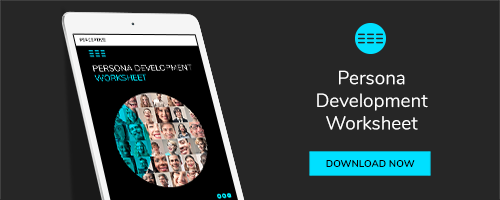Make market research easier for you and your team. Ask these five simple questions to determine whether a particular segment is the right target for your offerings.
Read more: Understanding your audience, the complete guide to market research.
1. Is this segment large enough?
“Large” in this context doesn’t necessarily mean volume of customers: it can refer to size of disposable income, or size of lifetime value, for example. Whatever segment you target needs to be significant enough to make your effort worthwhile.
A larger audience would allow you to get a high level of return without needing as large a total market share. On the other hand, a smaller segment with greater alignment with your product or service could be more profitable due to higher conversion rates.
The key is balance. Too broad, and you run the risk of trying to be all things to all people. Too narrow, and you could put yourself at risk relying on a small handful of customers.
A typical strategy is to begin broad, then refine. Operating with a broad segment such as age, gender or location narrows your data sufficiently to spot relevant patterns, but not so narrowly that you miss out on larger trends.
In practice, this could mean starting with a target audience that is male, 30-40 years old and lives in Australia (broad segments). You then refine it after a test period to male, 30-40, Australian, loves cricket and has a household income of about $120,000 a year.
Related content: Everything you need to know about the 4 types of market segmentation

2. Is this segment over-serviced already?
Targeting a segment that already has its needs met by several other competitors is unlikely to result in success for your company. The more saturated a market is with competitors, the more difficult it will be for your business to stand out.
Some products may lend themselves to a specific segment; a core demographic, geographic or psychographic. For example, children are inherently a strong demographic when you are selling toys and the same can be said for selling sports drinks to those interested in sports. Due to this inherent attraction, these broad segments are likely to already be saturated and companies should be ready to invest more resource to gain a foothold.
However, if you become more specific in your segment choice, the market gaps open up. A sports drink must be targeted towards those interested in sports, but there is still choice other factors to target: age, location, gender and so on are all potential opportunities in the market a business could exploit and avoid competition. Young men who live in New York might already have a lot of choice for sports drinks, but what about older women in more rural areas?
This same logic applies whether you're selling sports drinks or airplanes. Avoid over-serviced segments to exploit untapped audiences.
Related content: 3 common mistakes to avoid when creating buyer personas
3. How much could this segment grow?
It's often strategically viable to pivot towards an emerging trend (or audience, in this case) to obtain the ‘first-mover’ advantage.
Take Dungeons & Dragons as an interesting example. The latest version of this famous tabletop roleplaying game has seen an enormous growth in popularity over the last few years—something the developers of the game, the Wizards of the Coast, says is mostly down to the introduction of new technology like streaming and dedicated applications.
Seeing this opportunity, Wizards of the Coast invest in this technology early on. This has paid dividends—especially over the pandemic—as one of the most popular Dungeons & Dragons-related apps, Roll20, has seen the number of sessions of the latest edition of the game more than double since 2020.
The Wizards of the Coast (or more likely its owner, Hasbro) saw the opportunity for segment growth in its players—specifically for its digital players—and capitalised to great effect. If you find yourself in a similar position, a smaller audience with the potential for rapid growth can be just as valuable as engaging with an existing valuable segment.
For best results, use in conjunction with avoiding over-serviced segments.
4. How ready are we to service this segment?
Targeting a valuable segment isn’t much use if you are unable to service them properly. At best, this results in an inefficient, flat business growth trajectory. At worst, it can permanently damage your company’s reputation as you struggle to provide the same level of customer experience with stretched resources/skillsets.
Potential challenges you’ll need to address include everything from simple logistical issues (do you have enough capacity to deal with a sudden influx of additional customers?) right through to complex cultural considerations (does your team know how to effectively communicate with this new segment?).
Sometimes, businesses are ready to handle these new segments immediately, while others require further development along one or more axes. These may include new training procedures, new physical locations, new staffing volumes, new cultural adjustments, and so on.
5. How much development would we need to service this segment effectively?
You’ve identified where you’d be lacking in servicing a segment beforehand, and now you need to define if it’s still worth targeting this segment.
Enter the Ansoff matrix.
The more development required and the newer the audience, the higher risk you are entering into.
For example, if you were entering an existing market with an existing product or service (market penetration), you would be operating with very low risk—but potentially low reward as well.
On the other hand, if you were building a brand new product for an emerging audience (diversification)—both of which would require significant development both on your part and the audience’s—you are taking on a significant amount of risk.
Succeed on delivery, however, and you get first-mover advantages.
Ask these questions, and you’ll soon find yourself on the way to choosing the best target segment for your business.
Wondering how you can target your customer segments more effectively? Download the Persona Development Worksheet—our all-in-one guide to developing buyer personas.
